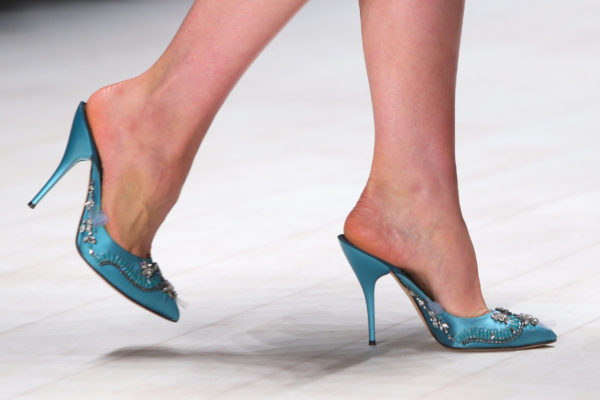When people travel abroad, it is essential to adapt to the local customs in order not to be seen as odd or even violate regulations by the locals. However, many places have unique customs and even regulations that may be difficult for outsiders to understand. In the state of California, the small city of Carmel-by-the-Sea once implemented a ban on high heels, requiring tourists to apply for a permit if they wished to wear high heels in the city.
Located in Monterey County, California, Carmel-by-the-Sea is a coastal town with only a few thousand inhabitants. One of its most distinctive and appealing features to tourists is the high heel ban.
In 1963, Carmel passed a law prohibiting individuals from wearing pointed shoes with heel heights exceeding 2 inches (approximately 5 cm) and sole areas less than 1 square inch (about 2.5 square cm). Those who wish to wear such shoes must apply for a free permit from the city hall in advance.
This regulation was put in place due to the risk of individuals tripping on the irregular sidewalks twisted by tree roots while wearing high heels. Carmel Police Chief Paul Tomasi once informed the SFGate website via email that “high heels are particularly dangerous on our sidewalks because many of them may not be level.”
However, the local authorities have not penalized anyone for violating this law, indicating that the regulation may not have been strictly enforced. Tomasi mentioned that they have not issued any citations for at least 40 years.
Tomasi stated, “We don’t really take it seriously. People getting permits is just a fun thing to do.”
Nowadays, many tourists apply for permits at the city hall, even if they do not intend to wear high heels, considering them as souvenirs. The certificate looks formal, issued in the name of the applicant, and signed by the duty city staff.
Carmel’s brick sidewalks, cobblestone alleys, and muddy paths are not suitable for high heels, but if you wish to try, technically, you need official permission.
Interestingly, Carmel had another peculiar regulation until a few years ago that prohibited people from eating ice cream in the downtown area to avoid sticky sidewalks. Apparently, the city has long been concerned about potential lawsuits for unusual reasons.
Similarly in California, the border town of Blythe, located a two-hour drive from Palm Springs, had a bizarre regulation in the past. The law prohibited people from wearing cowboy boots in the desert unless they owned at least two cows.
Speaking of high heels, many women are concerned about whether they can wear them because high heels are known for their heightening, enhancing posture, and shaping benefits, but they may also cause foot pain.
Regarding this, Dr. Chu Chia-hung, a renowned foot and ankle surgeon in Taiwan, mentioned that just like bicycles are a means of transport or fitness equipment, high heels serve as social tools. When considering these tools, the key is choosing what suits oneself and can be endured. The most crucial aspect is to pay attention to moderate use.
Dr. Chu explained that problems from wearing high heels are mainly due to human factors, such as wearing them for extended periods (overuse), wearing them in inappropriate settings (e.g., during walks, outings, or hiking), or children wearing them before their skeletal development is complete. He emphasized that there is no right or wrong when it comes to wearing high heels; it’s all about suitability.

